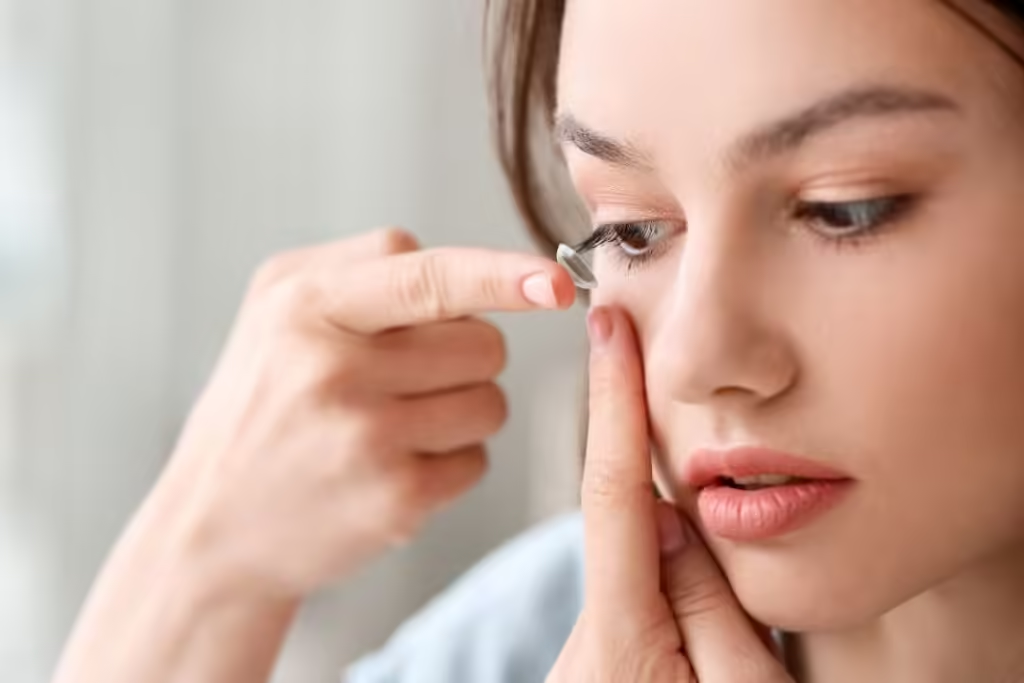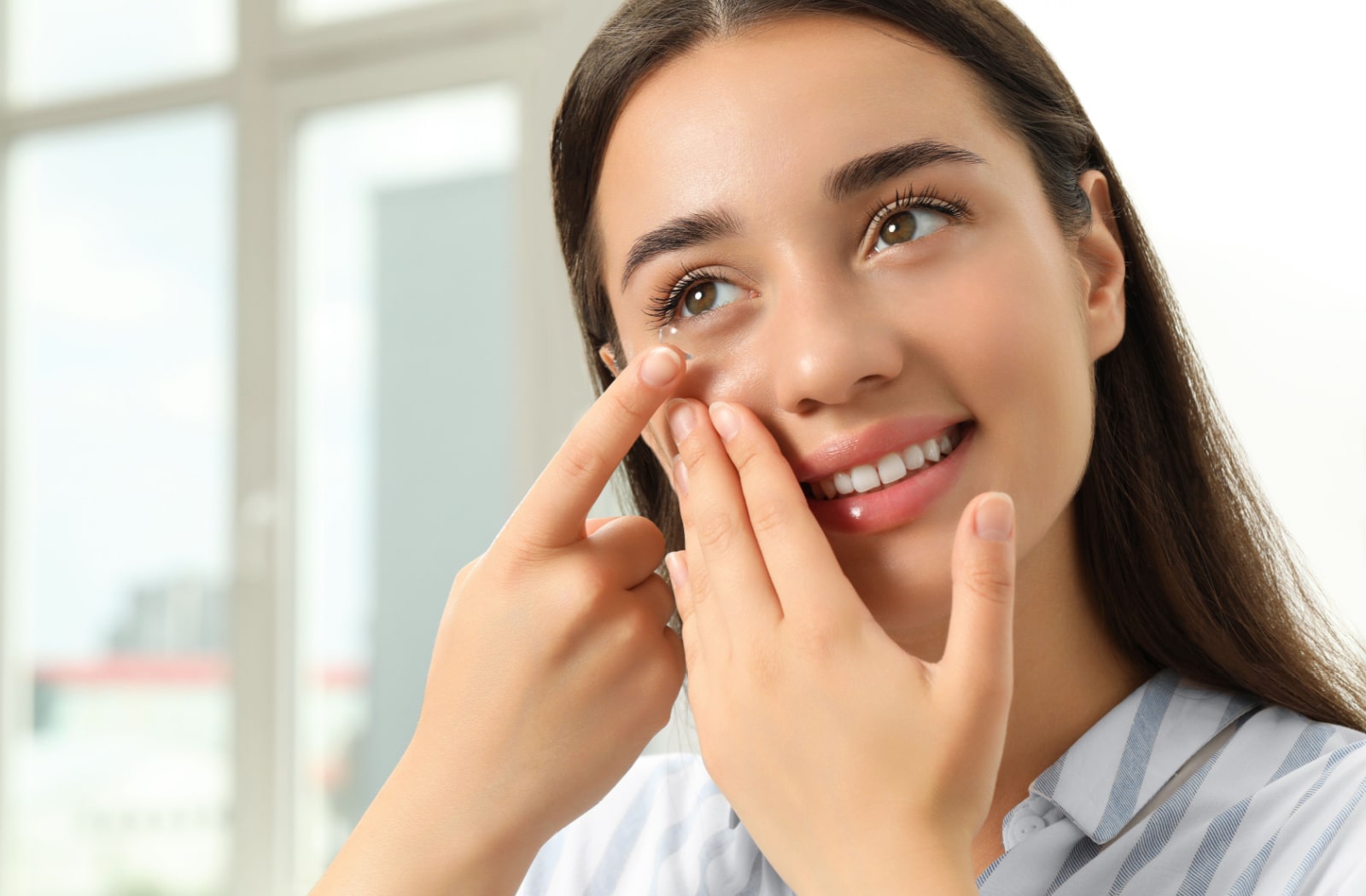
Contact lenses offer a convenient vision correction option with various trends, including new materials and designs for comfort. Proper care involves regular cleaning, correct usage, and timely replacement to avoid infections. Staying updated on trends and following care tips helps maintain optimal vision and eye health.
Why Contact Lenses?
Many people choose contact lenses for their convenience and comfort. Contact Lens Care Solutions provides a practical solution if you want a break from traditional glasses or need better peripheral vision. In addition to having a more comprehensive range of vision than glasses, contact lenses don’t fog up, making them perfect for sports and other activities. Additionally, contact lenses can stay in place during rigorous movements for those who enjoy an active lifestyle, unlike glasses that may slip or fall.
Contact lenses provide a natural look, boost self-confidence, and are suitable for vision problems such as nearsightedness, farsightedness, astigmatism, and presbyopia. They offer a more natural appearance and cater to a wide range of visual needs, making them a versatile option for many.
Different Types of Contact Lenses
Soft Contact Lenses
Soft contact lenses are flexible plastics that allow oxygen to pass through the cornea, providing comfort and ease of use. They adhere closely to the eye’s shape, offering flexibility in daily, weekly, and monthly disposables, catering to various lifestyle and eye care needs.
Rigid Gas Permeable Lenses
Rigid gas-permeable lenses are durable, sharper, and allow oxygen to reach the eyes. However, they may take longer to adjust. They are recommended for individuals with irregular corneas or high astigmatism, where soft lenses may not provide sufficient correction or stability.
Toric Lenses for Astigmatism
Toric lenses correct astigmatism, providing clarity on both vertical and horizontal axes. They have different powers in lens meridians, addressing uneven eye curvature. They are available in soft and rigid gas-permeable materials, offering various options.
Multifocal Lenses for Presbyopia
As we age, presbyopia, a condition where our ability to focus on close objects decreases, can be corrected with multifocal lenses. Like bifocal or progressive spectacles, these lenses offer sharp vision at various distances, improving the quality of life for people who require daily correction.
Trends in Contact Lens Technology
Advancements in contact lens technology have made lenses more breathable, comfortable, and practical. Smart lenses are being developed to enhance vision beyond human eyes, adjusting focus automatically. These lenses promise to improve visual acuity and monitor health conditions. Additionally, blue light filtering lenses can reduce eye strain from long computer hours. Silicone hydrogel lenses offer increased oxygen permeability for healthier, more comfortable wear. These innovations aim to integrate technology seamlessly into everyday life.
Tips for First-Time Wearers
Wearing contact lenses can be daunting for first-timers. Here are some helpful tips:
- Start with short wear times and gradually increase. This allows your eyes to adjust to the lenses gradually, reducing the risk of discomfort and irritation.
- Always wash your hands before touching lenses. Clean hands prevent the transfer of dirt, oils, and bacteria to the lenses, which can cause infections or irritations.
- Follow the lens care routine advised by your optometrist. Proper cleaning, rinsing, and storing methods are crucial for maintaining lens hygiene and eye health.
- Only sleep with your lenses in if prescribed. If you wear contacts while sleeping, the oxygen flow to your eyes may be reduced, which increases the risk of issues such as corneal infections.
Transitioning to contact lenses can be smoother and more comfortable with these tips, but patience and consulting an eye care professional are crucial.
Proper Care and Maintenance
Maintaining contact lenses is crucial for longevity and safety. Follow the eye care provider’s recommended solutions and replace lenses every three months to prevent bacteria buildup. Regularly rubbing and rinsing lenses with appropriate solutions, even using “no-rub” formulas, ensures thorough cleaning and disinfection. For cleaning and storage, adhere to the directions provided by the optometrist; do not use saliva or tap water to wipe lenses. Consistent care routines can reduce contamination risks.
Common Myths Debunked
Misconceptions about contact lenses include the belief that they can get stuck behind the eye, which is untrue due to the eye’s anatomy. Modern lenses are designed for comfort and usability, with advanced materials providing breathability and moisture retention. Over wearing lenses can cause vision problems, but adhering to a prescribed care routine can prevent complications. It’s crucial to differentiate between fact and fiction to make informed choices about vision care and alleviate unnecessary fears.
Regular Eye Exams: Importance and Frequency
Maintaining excellent vision health requires routine eye exams, which enable early diagnosis of any issues and proper contact lens prescription. These exams allow optometrists to assess eye health, check for signs of eye diseases, and update prescriptions. They also provide:
- Valuable advice on managing discomfort.
- Proper lens usage.
- The latest advances in lens technology.
Prioritizing regular eye exams is crucial for overall eye health and prompt resolution of vision changes.
Resources and Recommendations
The American Academy of Ophthalmology and the CDC offer valuable eye health and vision care technology resources. These resources provide comprehensive guides on eye conditions, treatments, and preventive measures. Referring to authoritative sources helps individuals make informed decisions about eye care, empowering them to take proactive steps and seek timely care. Consulting with eye care professionals for personalized recommendations can enhance the contact lens experience and overall eye health.

